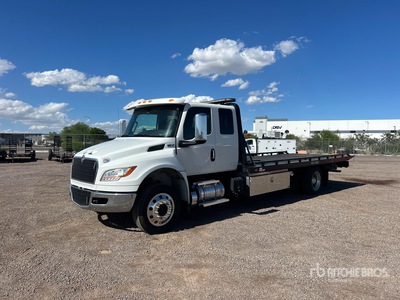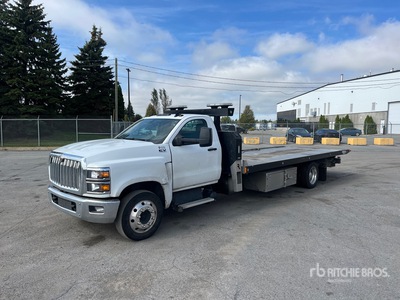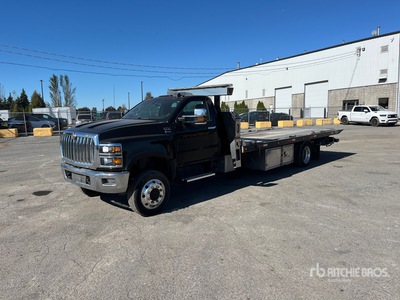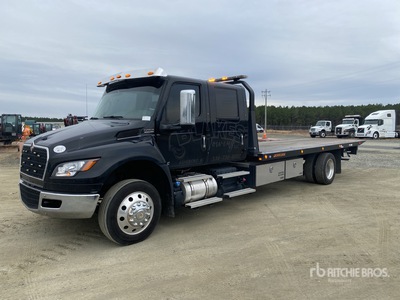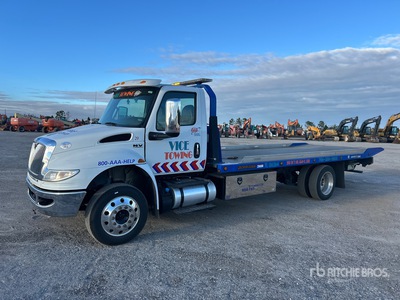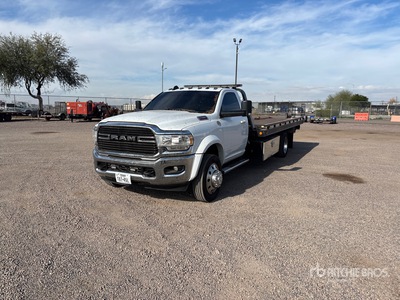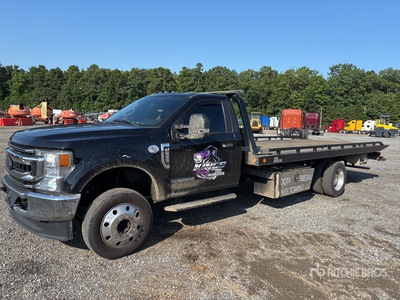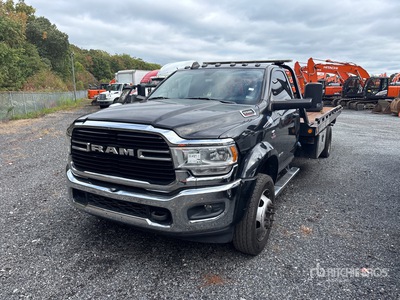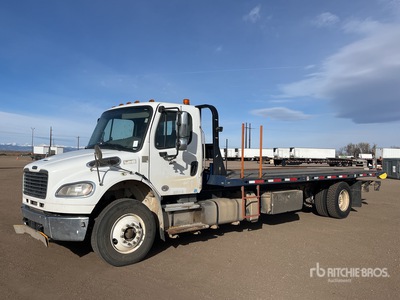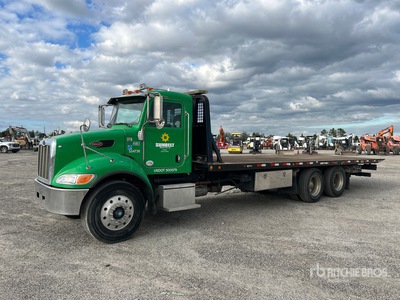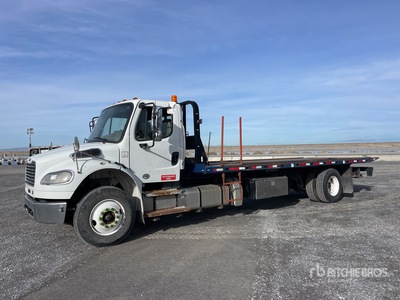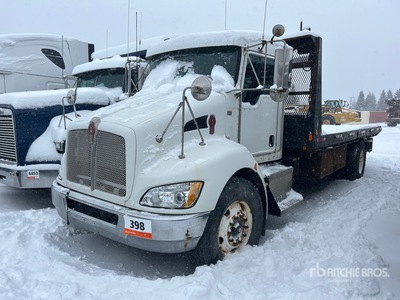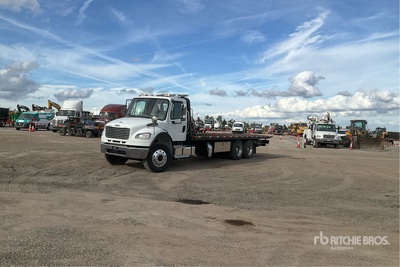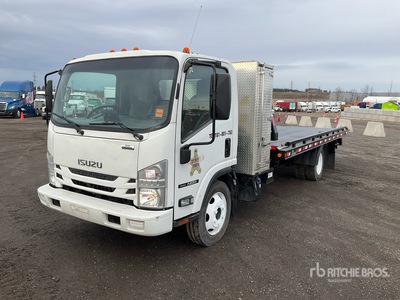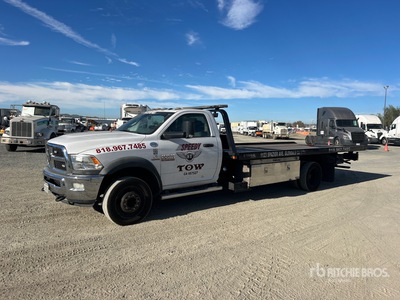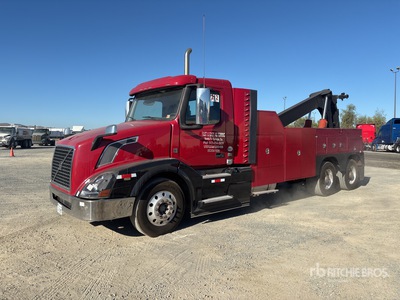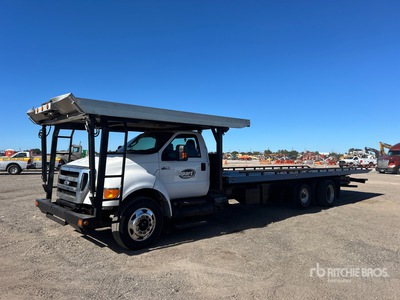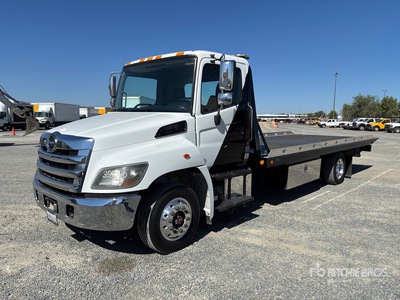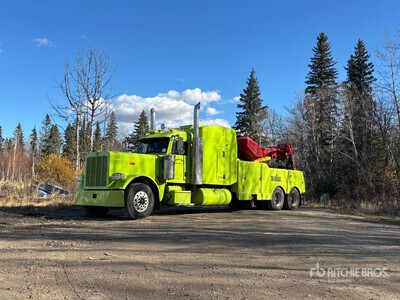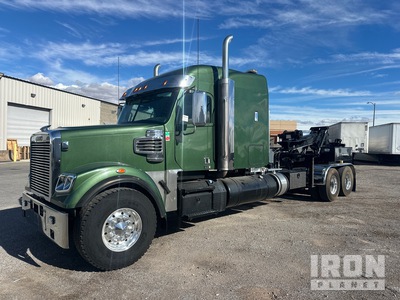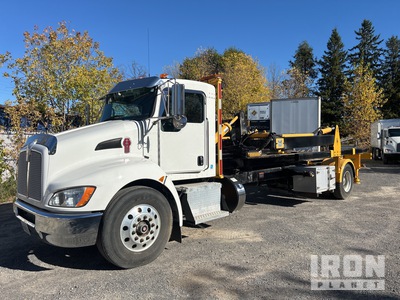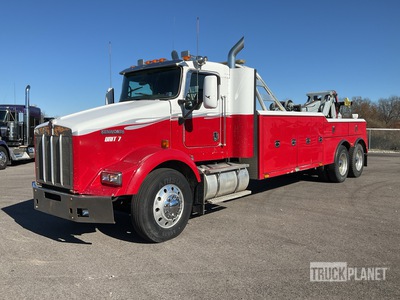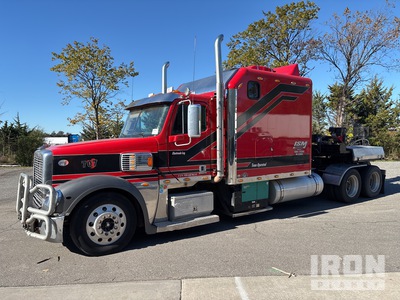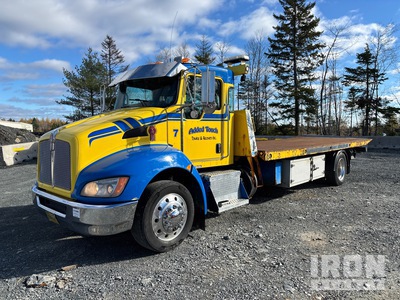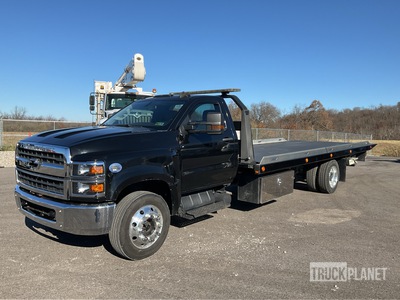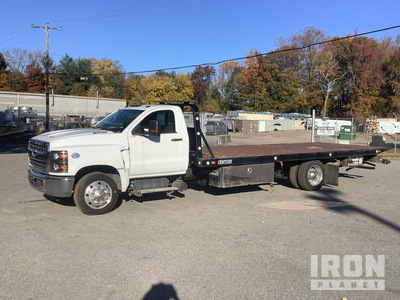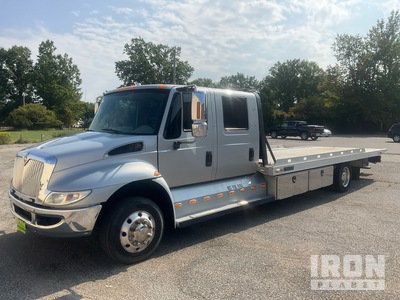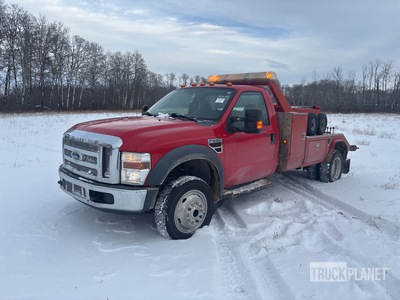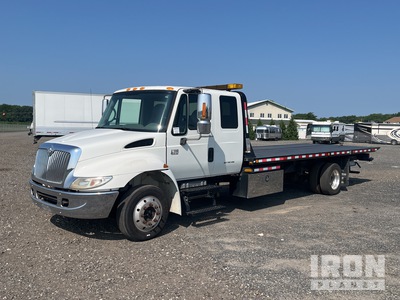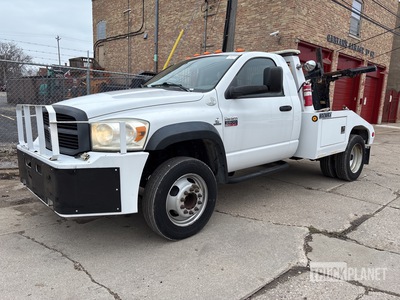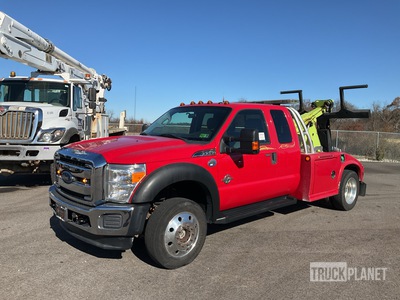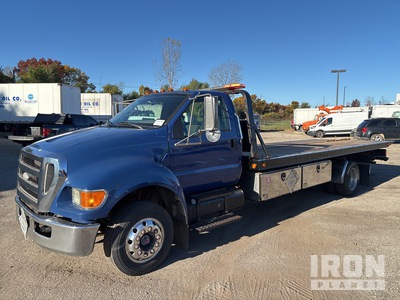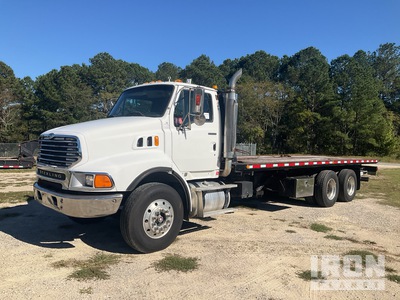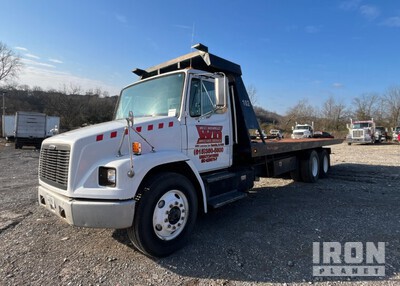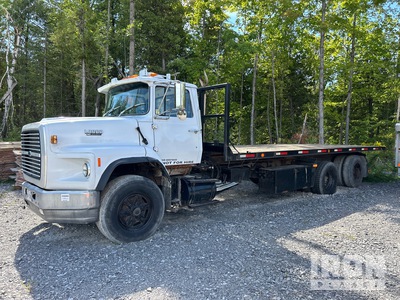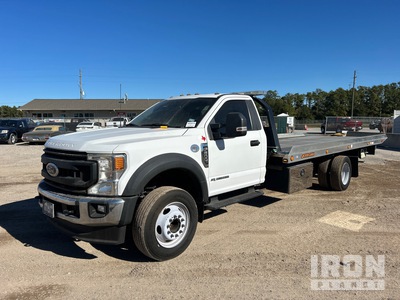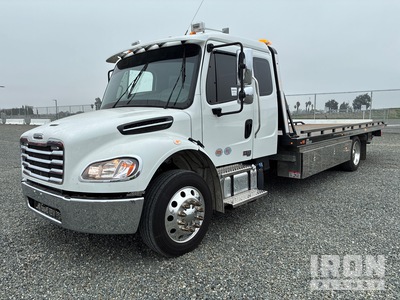Filters
Showing 0-60 of 72 results
- .
Sherwood Park, AB, CAN
968,954 mi
1-60 of 72
Find the right tow truck for your business with Ritchie Bros.
When you’re shopping for a tow truck for sale, you’re really buying uptime: the right chassis, body, and rigging that keep your crew safe, fast, and profitable. Below you’ll find a quick, buyer‑focused guide—written in a practical, spec‑driven tone—to help you compare used tow trucks for sale, wreckers for sale, and flatbed tow truck for sale listings across the U.S. and Canada.
Tow Trucks vs. Wreckers: What Buyers Mean (and Where Each Fits)
In everyday use, recovery vehicles and recovery trucks are umbrella terms. Within that:
- Carriers (flatbeds/rollbacks) move the entire vehicle on a deck—ideal for AWD/4×4, low‑clearance cars, and damage‑free transport.
- Wreckers use a wheel‑lift and boom/underlift to lift and tow by the axle; they’re fast to hook, great for accident scenes and tight urban work.
- Integrated/Heavy Wreckers & Rotators combine heavy underlifts with high‑capacity booms (and 360° rotation on rotators) for Class 7–8 recoveries.
If you’re scanning listings for a wrecker tow truck for sale, expect a wheel‑lift/underlift and boom ratings front‑and‑center. If you’re filtering for a flatbed tow truck for sale, deck length, winch rating, and bed material will lead the spec sheet.
Types You’ll See on the Market (and How to Compare)
Flatbed / Rollback Carriers
Best for: dealerships, roadside service, long‑distance transport, exotics, and EVs.
Specs to compare: deck length (commonly ~19–22 ft), winch capacity, bed material (steel vs. aluminum), wheel‑lift rating, PTO/hydraulics, and toolbox layout.
Light & Medium Wreckers
Best for: urban tows, impounds, tight retrieves where quick hook‑and‑go matters.
Specs to compare: underlift/L‑arm ratings, boom rating and reach, wheelbase, rear overhang, hydraulic controls, and lighting.
Heavy Wrecker / Rotator
Best for: tractor‑trailers, buses, and off‑road recoveries.
Specs to compare: rotator tonnage (e.g., 35/50/60‑ton classes), winch pull (and count), outrigger spread, underlift capacity, axle configuration, and chassis horsepower/torque. If you’re browsing a heavy duty wrecker for sale or heavy wrecker for sale, match the unit’s underlift and boom to your heaviest, least predictable jobs. For buyers searching heavy tow truck for sale, prioritize braking, cooling, and rear suspension setup alongside recovery gear.
Repo / Self‑Loader Tow Trucks
Best for: collateral recovery where speed and discretion matter.
Specs to compare: self‑loader mechanism type (in‑bed vs. slide‑in), lift rating, control ergonomics, camera systems, and pickup chassis GVWR. If you need repo tow trucks for sale, check how the upfit integrates with the truck’s electrical and charging systems.
Buyer tip:
Not all “wrecker” listings include the same rigging. Confirm what’s included—dollies, snatch blocks, chains/straps, spreader bars—so your total cost and readiness are clear on day one.
How Much Do Tow Trucks Cost?
There’s no single price tag for a used tow truck for sale—values move with spec and condition. Expect price to track with:
- Duty class & capacity: light/medium carriers at one end; heavy duty wrecker and rotator builds at the top.
- Chassis factors: model year, mileage/hours, engine family (and emissions history), transmission type, axle config, brake system, and wheelbase.
- Body & equipment: deck length/material, winch count and rating, underlift capacity, boom/rotator tonnage, outrigger design, and full rigging package.
- Condition & records: documented maintenance, hydraulic service, PTO output checks, electrical/lighting reliability, and tire/brake life remaining.
- Brand equity: Miller Industries (Century/Vulcan/Holmes), Jerr‑Dan, NRC, etc., can impact both resale and parts network access.
How to benchmark fast: pull recent auction results and active listings for similar chassis + body + capacity. Compare three data points—newer, similar, and older spec—to see where a given unit should land. That comping habit beats static “price ranges,” especially in volatile markets.
What’s the Most Common Tow Truck?
For everyday roadside and dealer calls across North America, flatbed/rollback carriers are the most commonly used configuration. Keeping all four wheels off the ground reduces risk for AWD/4×4 and low‑clearance vehicles, and the loading workflow is straightforward for mixed fleets. If that matches your job mix, prioritize flatbed tow truck for sale listings first, then add a light or medium wrecker as your second unit.
Tow Rates and the “80% Rule” (Why They Matter to Buyers)
Tow rates typically combine a base hook fee, per‑mile charge, and recovery time, with admin or storage where applicable. Rates vary by market, service type (light vs. heavy), and whether the job is part of a municipal/police rotation, motor club contract, or direct retail call. When modeling ROI for a purchase, use your local rate card and mix of calls—then ask, “Does this truck’s capacity open higher‑value work?”
The “80% rule” is a widely shared operational guideline: plan loads so real‑world weights and conditions keep your truck at ~80% of its rated capacity to preserve margin for grades, wind, traffic, and unknowns. It’s not a law, but it’s a prudent planning number. For heavy recovery, that margin protects driveline, braking, tires, and crew.
What to Inspect on a Used Tow Truck
Chassis & Driveline
- GVWR/Class match to the work; review axle ratings and rear suspension spec.
- Engine health (diagnostics, blow‑by, DEF/DPF service history), transmission shifts/hot performance.
- Frame rails, crossmembers, and rear overhang integrity; rust and prior repair quality.
- Brake system condition (including air systems on heavy units), tires (age, even wear).
Carrier / Wrecker Body
- Deck: slider tracks, cylinder seals, cable/winch wear, bed corrosion, deck rollers.
- Underlift & Boom: pin/bushing wear, telescoping action, tilt function, lock valves, and rated capacity tags.
- Hydraulics: leaks, hose condition, pump output, reservoir cleanliness.
- Electrical & Lighting: lightbar, work lights, wiring harnesses, controller responsiveness.
Rigging & Accessories
- Dollies, snatch blocks, chains/straps, spreader bars—quantity, ratings, and certification dates.
- Toolboxes: organization, latch integrity, and water intrusion.
Documentation & Fit‑for‑Purpose
- Service logs, upfit invoices, body‑builder manuals, and any in‑service inspection records.
- Verify the spec meets your core calls: for carriers, deck length and winch rating; for heavy units, rotator tonnage, outrigger spread, and underlift capacity.
Match the Truck to the Work (So You Buy Once)
- Dealers, motor clubs, retail tows: Start with a carrier; add a light/medium wrecker to increase flexibility on tight city calls.
- Municipal/accident rotation: Integrated wreckers accelerate clear‑time; ensure underlift capacity and lighting meet local requirements.
- Heavy recovery & highway incidents: 35–60‑ton rotators with multiple winches, outriggers, and strong underlift geometry.
- Repossession: Self‑loaders/slide‑in wheel‑lifts on ¾‑ton pickups with camera systems and protected controls.
FAQ
What’s the difference between a wrecker and a flatbed?
A wrecker lifts by the axle with a wheel‑lift/underlift (and often a boom), making it fast for accident scenes and tight spaces. A flatbed/rollback carries the whole vehicle on a deck—ideal for AWD, low‑clearance, and damage‑sensitive moves.
Do I need a CDL?
Depends on GVWR, air brakes, and local rules. Many medium‑duty carriers fall near CDL thresholds—check state/provincial requirements and insurance before you buy.
How long is a typical rollback deck?
Most buyers compare beds in the ~19–22 ft range. The “right” length depends on your mix (sedans vs. pickups/SUVs) and turning radius needs.
Is the 80% rule mandatory?
No. It’s a conservative operating guideline to keep real‑world loads comfortably within the truck’s rated capacity.
How can I start a tow-truck business and be profitable
If you're looking to start a tow truck business, your first step is identifying what type of recovery truck you need as that will determine your profit margins, start up costs etc. If you want to learn more, check out our expert blog article on starting a tow truck business and maintaining profits.
Final Takeaways for buyers
Lead with the work you do most, then buy the spec that makes those jobs safer and faster. Whether you’re filtering recovery trucks, used tow trucks for sale, or stepping up to a heavy duty wrecker for sale, capacity and condition pay for themselves every shift. Build your shortlist by matching GVWR, deck/boom/underlift ratings, and documented maintenance—then let comps across North America tell you what a fair deal looks like.
